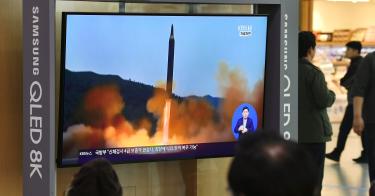A recent CBO report estimates that, over the next 10 years, U.S. nuclear spending will be 28 percent higher than estimated just two years ago. This led to howls that modernization is proving “far more expensive than anticipated.”
Not so fast. The report carries a ton of caveats and footnotes.
Here are four things to consider before jumping to conclusions about the cost of nuclear modernization.
First, the new report examines a different time period (2021-2030) than the previous one (2019-2028). That makes a huge difference.
>>> U.S. Nuke Chief Stresses Need for Modernization Amid Rising Threats
As the CBO explains, “The higher estimates in this report do not necessarily signal an increase in programs’ total lifetime costs.” They do, however, reflect a more expensive period for nuclear modernization: years 2029 and 2030, when procurement in key programs like the Ground Based Strategic Deterrent kicks into high gear. Fail to take that into account and you’re comparing apples to oranges.
Second, requirements have changed over the last two years. CBO attributes the bulk of higher costs projected for 2021-2028 (a period covered by both reports) to new requirements related to nuclear warheads. “The majority of that increase comes from new plans for modernizing production facilities for strategic materials…[and] warhead life-extension programs for which funding schedules have been accelerated.”
Given that 60 percent of our military nuclear facilities are over 40 years old and all weapons in the stockpile date back to the Cold War, new modernization plans and schedules, while more expensive, should be applauded.
Third, the CBO includes subjective cost estimates. Fifteen percent of the estimated increase arises from CBO’s decision to add an extra $21 billion to account for “general growth beyond budgeted amounts.”
This number isn’t based on known program or technical difficulties. It merely reflects historical growth rates for similar programs. This part of the estimate, therefore, is far from guaranteed.
As another example, the report projects the nuclear sea-launched cruise missile will cost $10 billion over 10 years. Since this project does not yet have an acquisition strategy, CBO had to base this estimate on cost data for the Long-Range Standoff weapon, a completely different system. Such subjective estimates are by no means locked in.
Fourth, CBO includes dubious costs that inflate the numbers, like the costs of sustaining our current nuclear forces on top of their replacement programs. For instance, the CBO lists $4.2 billion for intercontinental ballistic missiles (ICBMs) for FY 2021, even though Congress appropriated only about $1.5 billion for the Ground Based Strategic Deterrent program.
To account for this discrepancy, you have to comb through additional data tables found elsewhere on the CBO website. Ultimately, you discover a table that lists $2.8 billion for ICBM modernization—a number that must include warhead modernization, although it’s not made explicit.
The rest of that $4.2 billion goes to operating and sustaining the 50-year-old Minuteman III missiles, which confuses the cost of replacement with what we already must do to sustain our deterrent. As a result, some have erroneously claimed that the cost of replacing the nuclear triad “jumped” to $634 billion, even though a significant chunk of that covers sustainment costs.
Moreover, CBO includes costs of non-nuclear systems, including 100 percent of costs for command and control, even though those systems serve non-nuclear missions as well. It includes only 25 percent of bomber expenses to account for the bombers’ significant conventional mission, but even that number is bloated.
>>> China’s Growing Nuclear Threat
CBO could have more accurately estimated the additional costs of making our bomber fleet dual-capable, since eliminating the nuclear role for bombers would likely not result in a 25 percent decrease in the bomber fleet. Former Obama official Jim Miller estimates that the added costs for making our bombers dual-capable would be closer to 3 percent of total bomber costs.
Considering these four factors, it would be disingenuous to use this report to advocate for cuts to nuclear funding. Delaying programs and deferring costs does not avoid costs; it simply makes everything more expensive in the long run.
CBO proves this point when it highlights the higher costs now estimated to sustain the Ohio-class submarines. The larger price tag, it says, is due to “plans to operate some Ohio class submarines longer than had previously been planned.”
That observation refers to a 2012 decision to delay procurement of the Columbia-class submarine. While that decision saved money in the short-term, costs for both the Columbia-class submarine and Ohio-class sustainment have increased since then, while leaving no room for further delay in the Columbia’s schedule.
Policymakers are owed clarity over costs for national defense. And clarity is particularly important when assessing the costs of our nuclear forces. That’s because, as Defense Secretary Lloyd Austin has acknowledged, nuclear deterrence is the number one mission for national security. The potential cost of failing to modernize our nuclear deterrent is incalculable.
This piece originally appeared in The Hill on 5/31/2021



